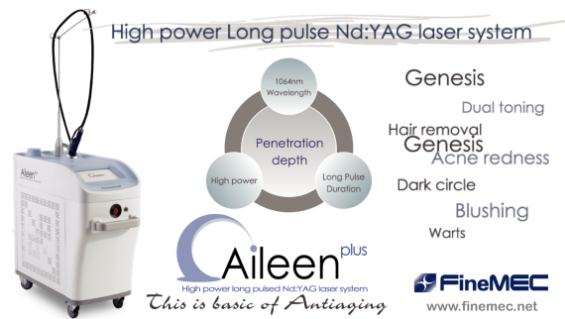▶ Previous Artlcle : #1. Therapeutic Ultrasound
We have discussed the history and general concept of ultrasound in the previous article. Now, let us focus on the biological mechanism of action of ultrasound. The biological mechanism by thermal effect and non-thermal, non-cavitational effect and then cavitational effect will be covered in this article.
[Advertisement] ▶ Aileen plus(Long pulsed Nd:YAG Laser) – Manufacturer: FineMEC(www.finemec.net)
1. Thermal Effect of Ultrasound
There are three areas of ultrasound therapies based on the thermal effect; physical therapy, hyperthermia and ablation. The ultrasound device for physical therapy uses unfocused plane wave, while the device for ablation uses focused wave.
Then how does ultrasound create the thermal effect?
When ultrasound energy passes through a material such as the tissue of human body, the amplitude of the wave decreases with distance. This effect is called attenuation, which occurs mostly by absorption or scattering. The absorption is the mechanism where the ultrasound energy is converted to heat. By molecular repetition of longitudinal waves, the absorbed energy elicits potential of amplitude of molecules, and the repetitive molecular activity generates friction and resultant heat energy.
The extent of absorption can vary depending on three variables; the viscosity of gain medium, relaxation time of gain medium and ultrasound frequency. Viscosity generally refers to glutinous nature or internal resistance against the flow of liquid or gas, and is considered as a measure of a fluid's resistance to flow. For example, starch syrup has a greater resistance to flow compared to water and is therefore considered to have a high viscosity. As with rubbing (friction), viscosity can convert kinetic energy of a moving object to heat energy, and a tissue with a higher viscosity associates with increased absorption. Relaxation time refers to the time it takes for the molecules of a gain medium to return to the original state by ultrasound energy after a phase shift. Each gain medium and tissue have a unique relaxation time. After having a phase shift by the first wave, a tissue with a short relaxation time can return to the original state before the second wave arrives, while for a tissue with a long relaxation time, molecules are vibrated again by the next wave before returning to the original state, resulting in increased energy absorption. Higher frequency associates with increased molecular vibration and thus the absorption as well.
Amplitude is reduced in proportion to the propagation distance by the attenuation effect, but the magnitude of ultrasound is proportional to a square of amplitude, or reduced exponentially. The depth of a tissue where the magnitude of ultrasound is reduced by half is called ‘ultrasonic half value thickness (HVT)’. HVT is unique to each characteristic tissue and varies depending on the discharged frequency. HVT by tissue and frequency (2 and 5 MHz) is summarized in <Table 1>, indicating that lower frequency can deliver more energy into the deeper area.

Table 1. HVT by Tissue and Frequency
The absorption of ultrasound energy, the mechanism of thermal effect, is affected by frequency, tissue characteristics, tissue density, tissue viscosity, acoustic impedance, water content, and the extents of reflection, scattering and refraction.
Let’s discuss the impedance and reflection among them.
As impedance is the resistance to current, acoustic impedance refers to the resistance to sound. Sound wave velocity is affected by the density of the medium and increases with elasticity. Acoustic impedance (Z) is the density of medium multiplied by the velocity inside the medium, so the transmission of ultrasound is affected by the acoustic impedance of medium. Each tissue has a unique impedance, as shown in <Table 2>.

Table 2. Unique acoustic impedance of each tissue
-To be continued-
▶ Next Artlcle : #2-2. Thermal Effect and Non-Thermal, Non-Cavitational Effect of Ultrasound





















